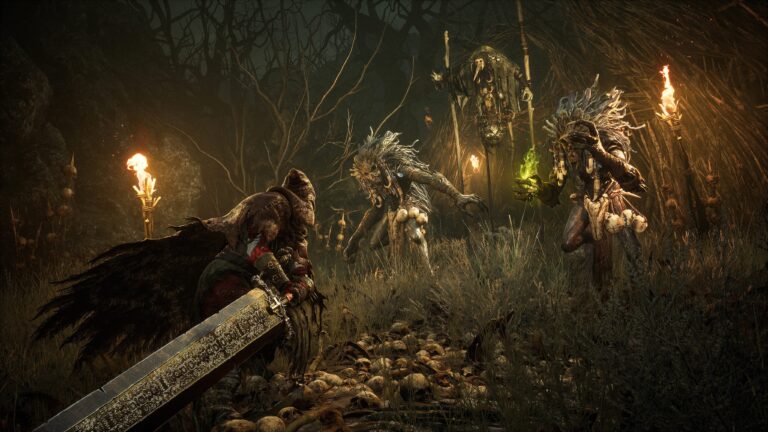So, Grand Theft Auto V is coming out. Again.
That’s right; next spring we’ll all be treated to the latest release of the biggest money-maker the mad lads and ladies of Rockstar have yet conceived – and despite the new bells and whistles plastered on top of the now generations’-old code, it’s guaranteed to be just about the same game. It’s *also* guaranteed to make more money than most of us will ever see.
Rockstar, of course, isn’t the first to do this. As we gamers well know, for every new IP released in our favorite genres these days it seems ten remakes and remasters hit the shelves. There are probably dozens of Bethesda children who have been born, raised and sent to college off the money their parents have made re-selling Skyrim alone (which is incidentally also coming out, again, this November).
Placing aside the possible complaint of long-suffering sports gamers who decry the blatant copy/paste jobs running rampant year over year in their favorite releases, there is no category of games so enamored with remaking or remastering their older titles as open world titles seem to be. While eager fans long for new enemies to vanquish and quests to complete, developers and publishers see it fit to instead lead them down the same paths again and again (and again). But why is this the case – and where can open world gaming take us next, if the industry can release it from this cycle?
It’s a Numbers Game
There’s something to be said for nostalgia; it sells. Look at every major entertainment industry today, and it doesn’t take long to note the number of T.V. shows, movies, comic books and the like that peddle aging fan bases’ adolescent memories back to them in order to turn major profits. Videogames are no different, and perhaps even more influenced by this in that it is such a relatively young form of entertainment. In most cases, the very founders of modern videogaming are still alive, and gaming’s first child fans are now grown-up fans with deeper pockets and a basic human need to reconnect with their past. The fact is, game publishers have a vested monetary interest in selling what we already know back to us over something new and untested. Like Todd Howard said – they’ll stop remaking Skyrim ‘when [you] stop buying it’. We haven’t stopped yet, and likely never will.
There’s another factor at play regarding all the remakes and remasters of open world games in particular; the sheer size and number of locations, enemies, weapons and other variables that go into each title. It’s easy to see why developers and publishers alike might push for what’s known over what’s not, when what’s not might take a ton of time and money to develop and still might end up a critical and commercial flop.
So, that’s where we’re at – mired in regurgitated stories and controlled by a risk-averse industry (sigh). But how might we get to something new and different in our open world games? What would that look like?
Quality over Quantity
I don’t know about you, but I have grown over the past few years to despise ‘side content’. What began as neat little add-ons to my demon slaying, assassin training or dictator overthrowing has now ballooned into a smorgasbord of markets to visit, papers to collect, animals to chase down and errands to run, and I’m done with all of it.
I’m not saying that there shouldn’t be things to do outside of the main story quests in open world titles, but there are only so many times you can delve into a similar-looking cave, kill some similar-looking guards and retrieve the contents of the same old chest inside before it wears a little thin. Sure, one could make the argument that the ‘princess is in another castle’ tactic has been used since the beginning of home videogaming in order to keep people playing by artificially padding out content, but how much padding is necessary?
In my opinion, instead of making more content in order to fill some unnamed quota game developers should rather focus on making the main content on offer more varied and interesting. Forget the thousands of mountaintops; give us one or two realistic, living cities where every street is unique and interesting. Ditch the millions of minor baddies; put before us one amazing, memorable antagonist and their closest associates, whose mannerisms and motivations are as diverse as they are deadly. In short – go back to quality over quantity in open world games. This would likely reduce both the cost and the time frames necessary to create these titles, and who knows? Slightly shorter, more polished releases might actually bring in more fans – and thus, more profits – to publishers producing open world games in the long run.
Make it Count
One of the main problems in the open world genre as a whole is knowing when to say when. There is a constant pull in these titles between the narrative and technical sides of the worlds within, meaning that often times open world games need to place unnecessary and frequently preposterous gate-keepers in the form of overpowered enemies or impossible-to-complete missions before the player to avoid breaking the established narrative. It’s difficult to blame developers for the issue, however, when outspoken gamers also play a role in how these games are constructed.
When Fallout 3 was initially released, Bethesda received a mega-ton of negative feedback when it was revealed that there was a point at which the player could no longer freely explore the Capital Wasteland should a particular story mission be reached. At the time, Bethesda caved and patched out the ‘issue’, allowing for the breaking of narrative in the interest of keeping the title more fully open-ended and explorable. Sadly, in my opinion this has caused a ripple effect in open world gaming, causing subsequent development teams to similarly craft worlds with never-ending loads of things to do that don’t really have much impact.
I would argue that as with side quests, so too should go main quests – make them count. Make our choices as players really matter, and craft the experiences that lead to those choices along a logical pathway that rings true to who and what we understand our characters to be. Don’t put a un-pickable door somewhere if you gave us the skill to break in everywhere else, and don’t kill us with a level 1,000 goat after we’ve slain half a continent. If the game needs to end in order for it to make sense, then have the courage to let it end. Give us that open world sandbox we love so much, yes – but give it realistic boundaries, and we’ll enjoy playing in it that much more.
Hope, Thy Name is Indies
Given the financial realities of today’s gaming space, remakes and remasters of our favorite open world titles are likely here to stay. That doesn’t mean all hope is lost, however – and I for one choose to put mine in the innovative minds behind today’s indie and so-called “AA” releases. Smaller teams, unattached to established franchises and not beholden to large publishers can, with today’s technology, create amazing new worlds for us to explore. Hopefully, we’ll begin to see more and more of what they can do for the open world genre in the future.
Until then, I suppose I’ll call my horse. I’ve got some more caves to empty.
Stay tuned to Gaming Instincts via Twitter, YouTube, Instagram, and Facebook for more gaming news!
No related posts.






